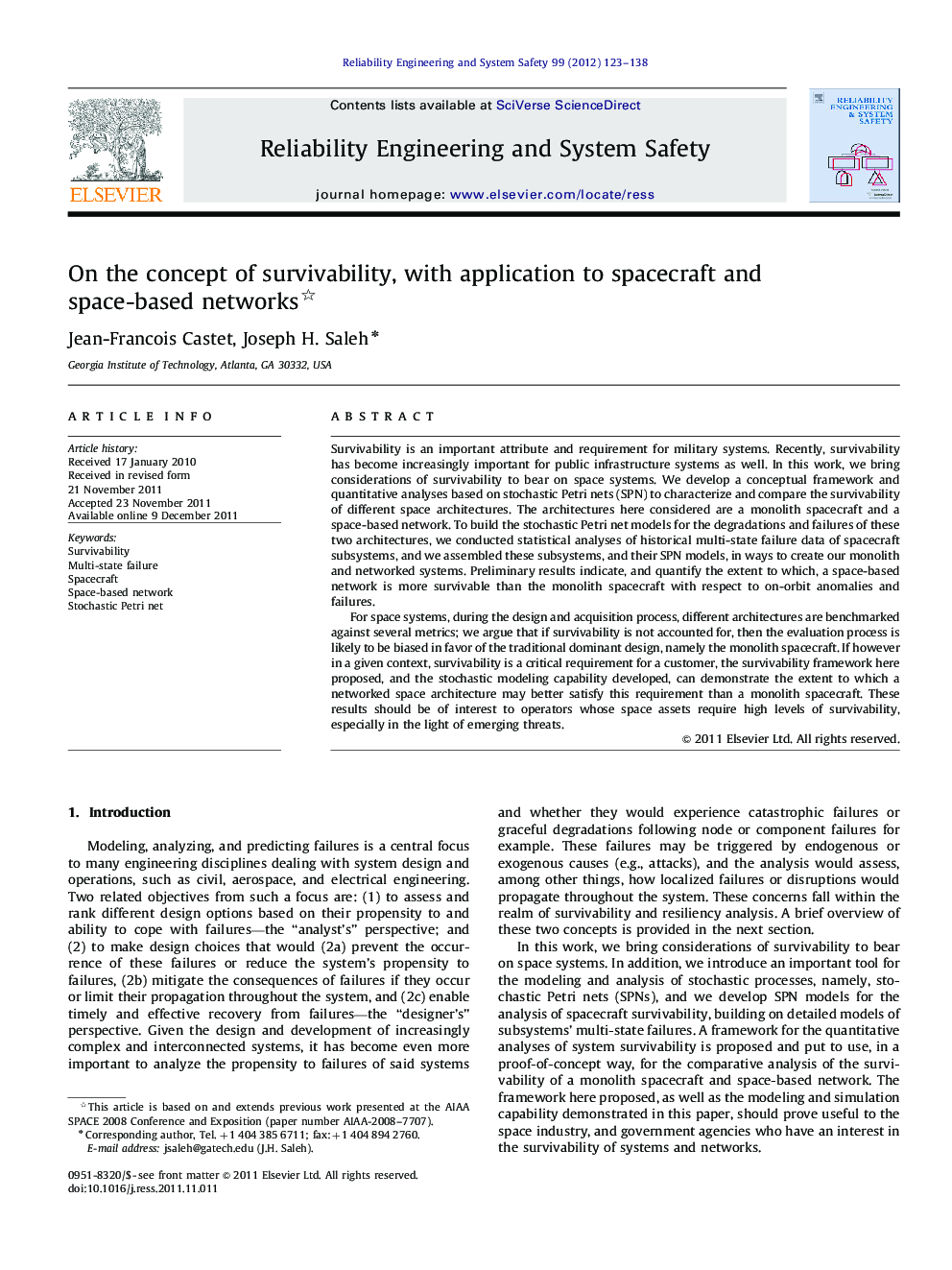| Article ID | Journal | Published Year | Pages | File Type |
|---|---|---|---|---|
| 805767 | Reliability Engineering & System Safety | 2012 | 16 Pages |
Survivability is an important attribute and requirement for military systems. Recently, survivability has become increasingly important for public infrastructure systems as well. In this work, we bring considerations of survivability to bear on space systems. We develop a conceptual framework and quantitative analyses based on stochastic Petri nets (SPN) to characterize and compare the survivability of different space architectures. The architectures here considered are a monolith spacecraft and a space-based network. To build the stochastic Petri net models for the degradations and failures of these two architectures, we conducted statistical analyses of historical multi-state failure data of spacecraft subsystems, and we assembled these subsystems, and their SPN models, in ways to create our monolith and networked systems. Preliminary results indicate, and quantify the extent to which, a space-based network is more survivable than the monolith spacecraft with respect to on-orbit anomalies and failures.For space systems, during the design and acquisition process, different architectures are benchmarked against several metrics; we argue that if survivability is not accounted for, then the evaluation process is likely to be biased in favor of the traditional dominant design, namely the monolith spacecraft. If however in a given context, survivability is a critical requirement for a customer, the survivability framework here proposed, and the stochastic modeling capability developed, can demonstrate the extent to which a networked space architecture may better satisfy this requirement than a monolith spacecraft. These results should be of interest to operators whose space assets require high levels of survivability, especially in the light of emerging threats.
